by Julia Frederick
This article first appeared in Wild Seed Magazine, Volume 5, a publication of Wild Seed Project, and is reprinted with permission.
Shade trees are more important than ever as we face rapid development and suburban sprawl, deforestation and desertification. These gentle giants help combat rising temperatures, habitat loss and declining air and water quality.
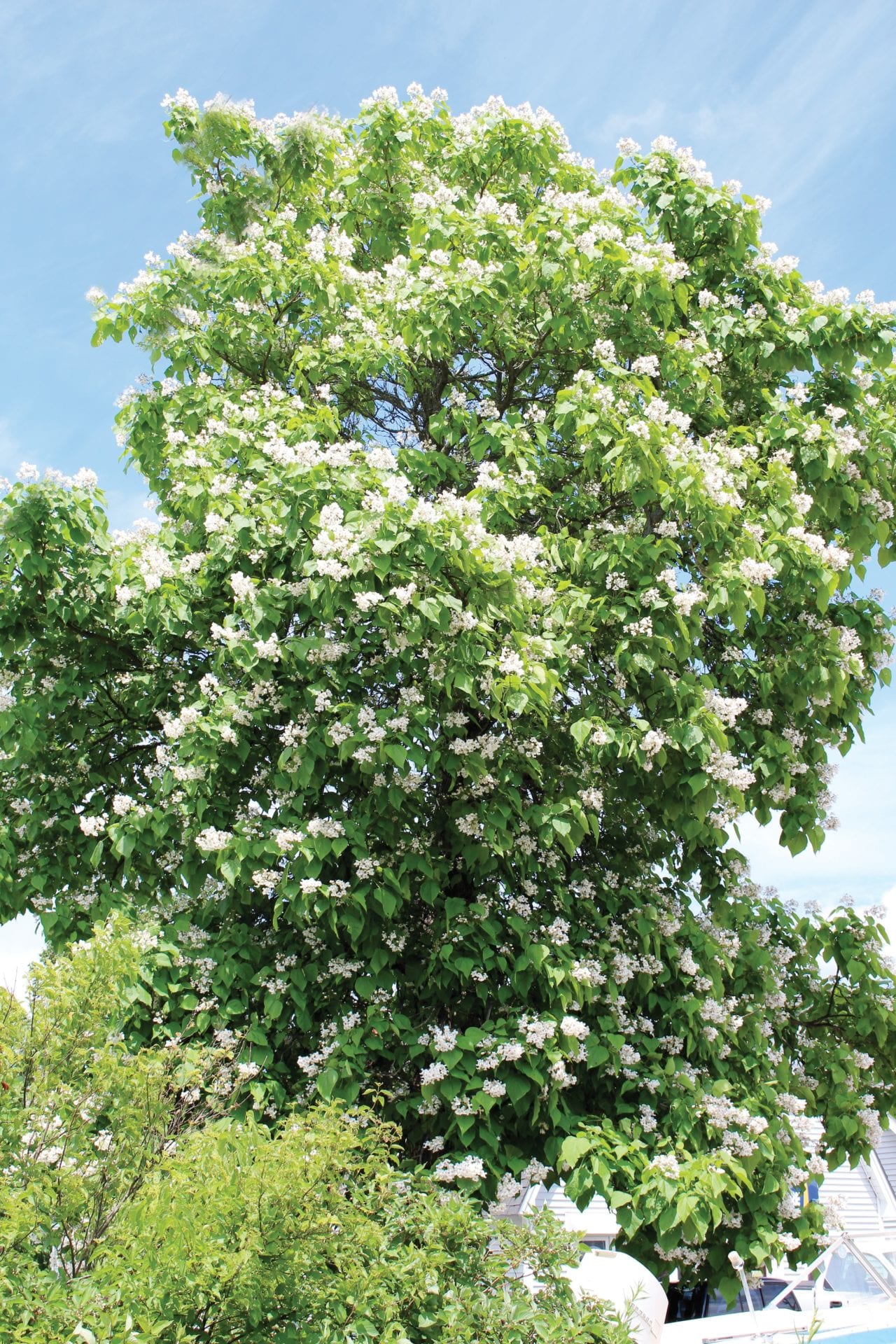
Large native trees such as Northern catalpa (Catalpa speciosa) provide shade and also cool surrounding air through transpiration. Photo: ©Heather McCargo, Wild Seed Project
Trees with large canopies lower surface, air, and interior building temperatures not only through direct shade but also through the process of transpiration (evaporation of water from plant leaves). When strategically placed on the south and west sides of buildings, trees can lower energy demands from air conditioning. Fewer emissions evaporate out of the gas tanks and hoses in parking lots shaded by trees, and tree leaves filter gaseous pollutants and airborne particles through physical interception and respiration.
In built areas, the roots of resident shade trees absorb stormwater runoff, intercepting and processing contaminants such as motor oil, fertilizer and pet waste. By reducing the volume and velocity of stormwater, shade trees help prevent erosion and flooding.
Native canopy trees provide abundant food and shelter for insects, amphibians, birds and mammals. For example, indigenous oak trees support hundreds of moths and butterfly species and the bird species that feed on them (see Jaffe and Richardson, Native Plants for New England Gardens).
Choosing Your Trees
Choose a straight native species, not a cultivar or named variety, for the greatest wildlife benefits. Non-native cultivars (clones selected for certain characteristics) are often sterile plants that lack the genetic diversity populations will need to withstand disease and climate change. Because cultivars typically produce little pollen, they do not support native pollinators as well as natural native species.
To determine good candidates for your particular situation, consider your regional U.S. Department of Agriculture hardiness zone and the soil type, sun exposure and moisture levels. Secondary factors to weigh include your preferences regarding fall foliage, wildlife attraction and the tree’s overall form.
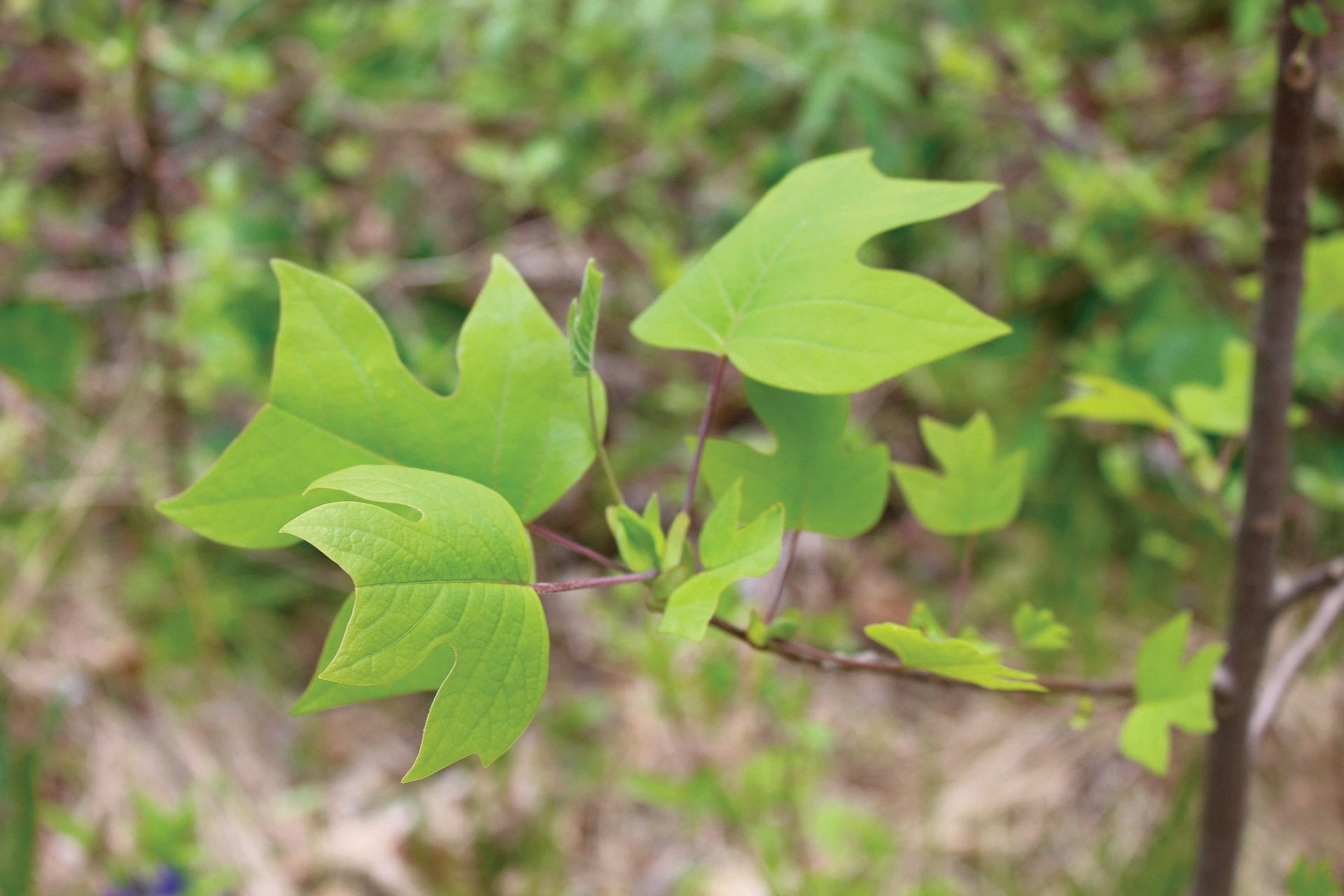
Unusually shaped leaves and tulip-shaped flowers distinguish tulip tree (Liriodendron tulipifera). Photo: ©Heather McCargo, Wild Seed Project
Many extraordinary native tree species deserve greater popularity as landscape plants in New England. Black tupelo tree (Nyssa sylvatica) has brilliant red-to-orange fall colors and a distinct pyramidal, horizontal branching habit. The tall, slim shagbark hickory (Carya ovata) offers delicious nuts, vibrant yellow fall foliage and striking textured bark. Tulip poplar (Liriodendron tulipifera), a large tree with a columnar trunk, has unusually shaped leaves, tulip-shaped flowers and bright fall color.
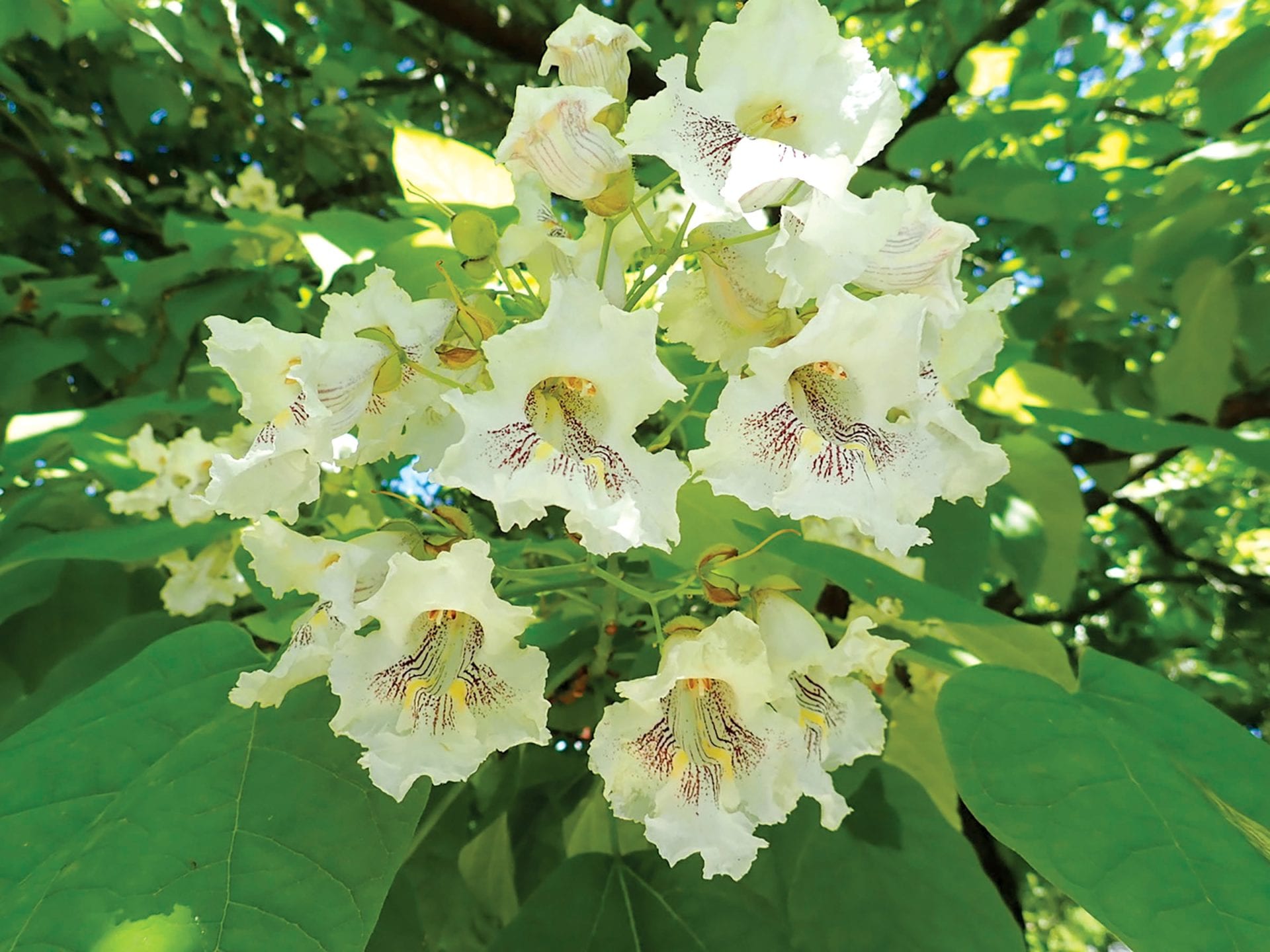
Large clusters of fragrant flowers of the Northern catalpa (Catalpa speciosa) feed early pollinators and later form dramatic black seed pods. Photo: ©Heather McCargo, Wild Seed Project
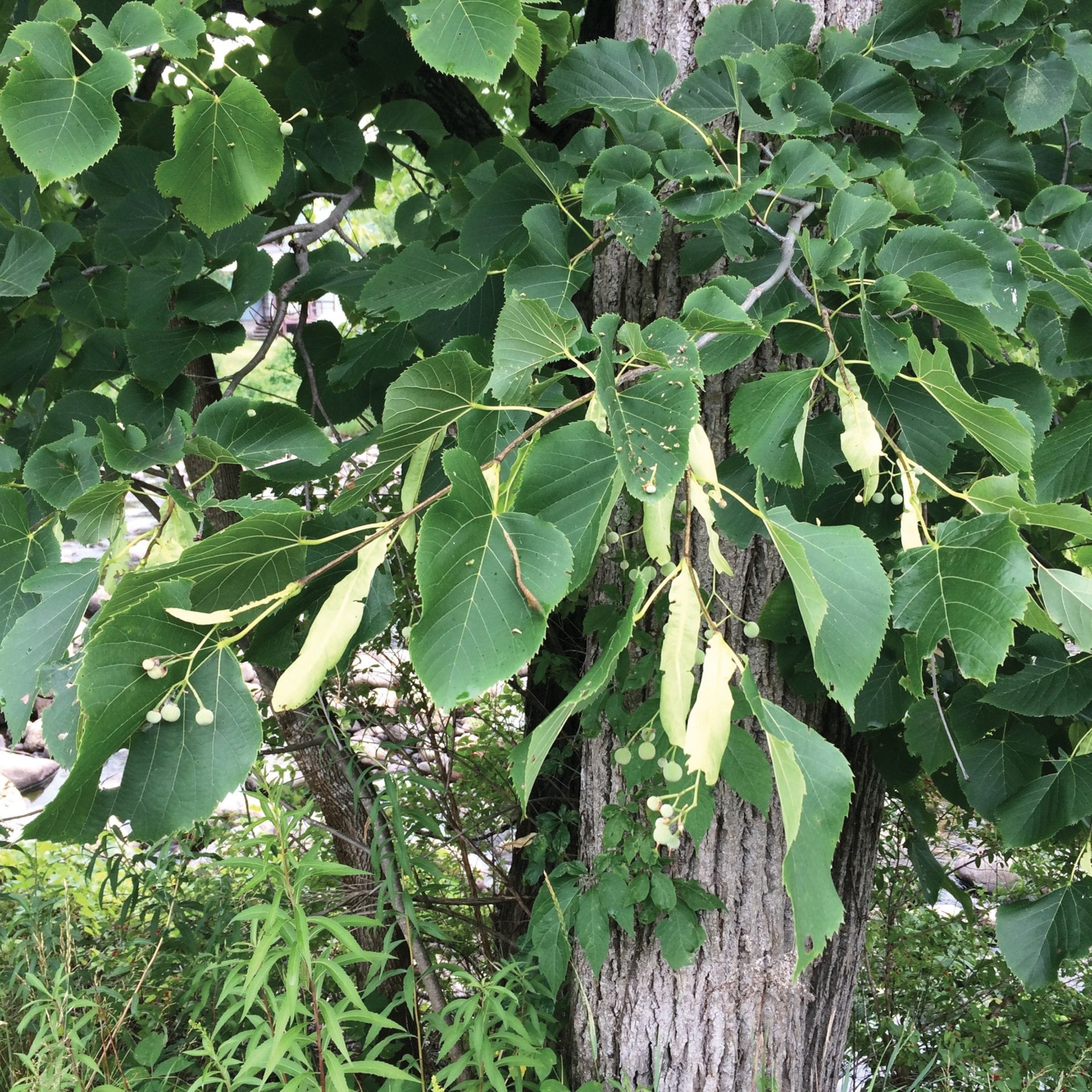
Basswood (Tilia americana) supports many native pollinator species. Photo: ©Heather McCargo, Wild Seed Project
Northern catalpa (Catalpa speciosa) produces abundant orchid-like flowers that feed pollinators in early summer, while in winter its sculptural form and black pods create a dramatic presence. American beech (Fagus grandifolia) possesses a delicate beauty, with smooth gray bark and slender twigs and buds. Its golden autumn leaves fade to tawny and remain in winter, functioning as a privacy screen. Although many native beech forests have been affected by the invasive Beech Bark Disease, breeding programs have been developed for resistant beech genetics and the disease can be managed easily on the residential scale. Yellow birch (Betula alleghaniensis), with its champagne-colored curling bark, has bright green leaves that turn gold in autumn. Its twigs, which contain wintergreen oil, can be used to make a soothing tea. Basswood (Tilia americana), also known as American linden, has fragrant flowers that support many native pollinator species. Its dense canopy provides deep shade and wind protection (and even humans can eat its leaves!).
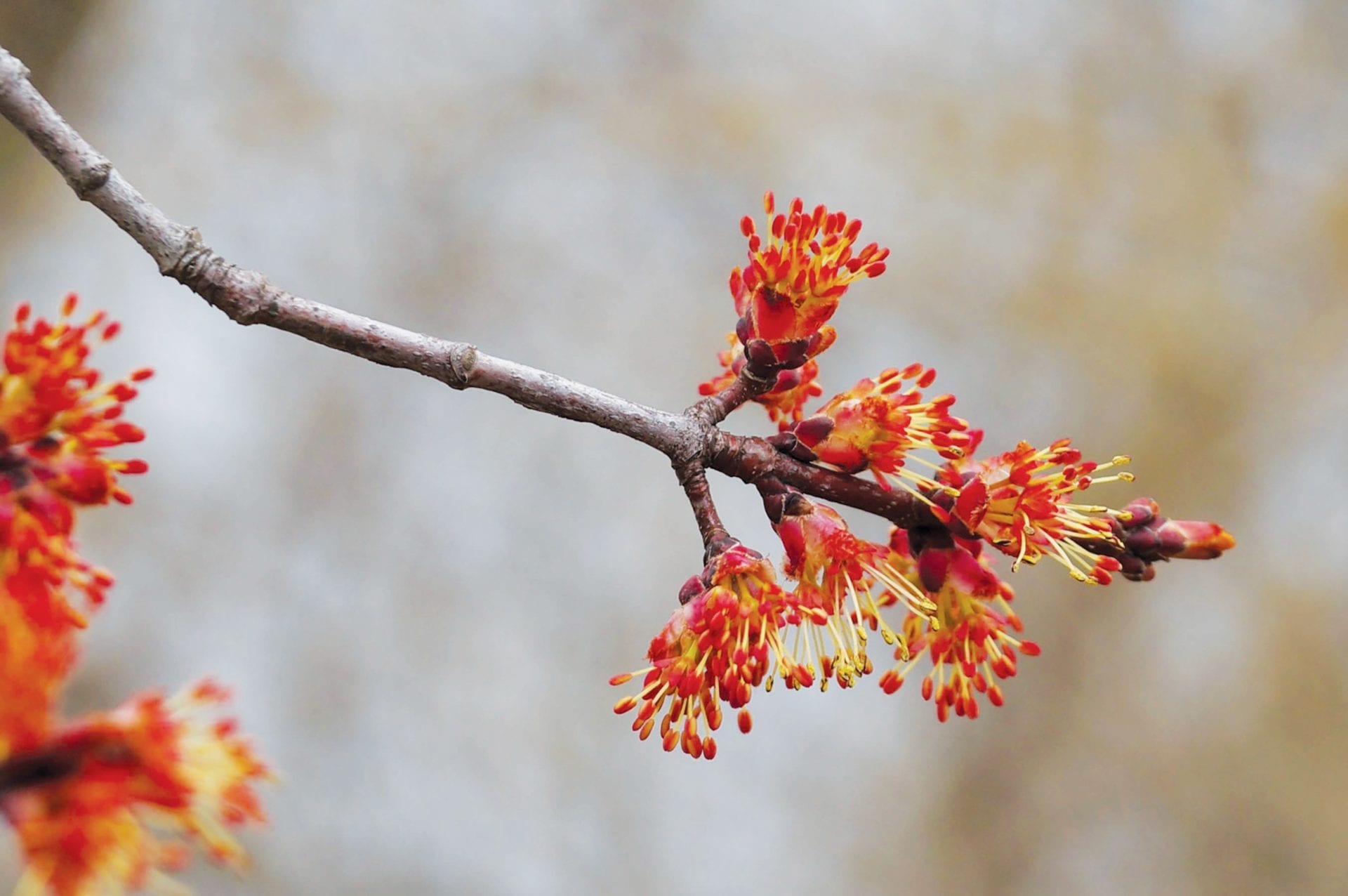
Flowers of red maple (Acer rubrum) lend a vibrant hue to the tree in early spring and the leaves provide red autumn foliage. Photo: ©Heather McCargo, Wild Seed Project
In recent decades, research institutions and nurseries have worked to identify, propagate and reintroduce disease-resistant genetic strains of American chestnut and American elm trees. As in bygone days, American elm makes an excellent street tree.
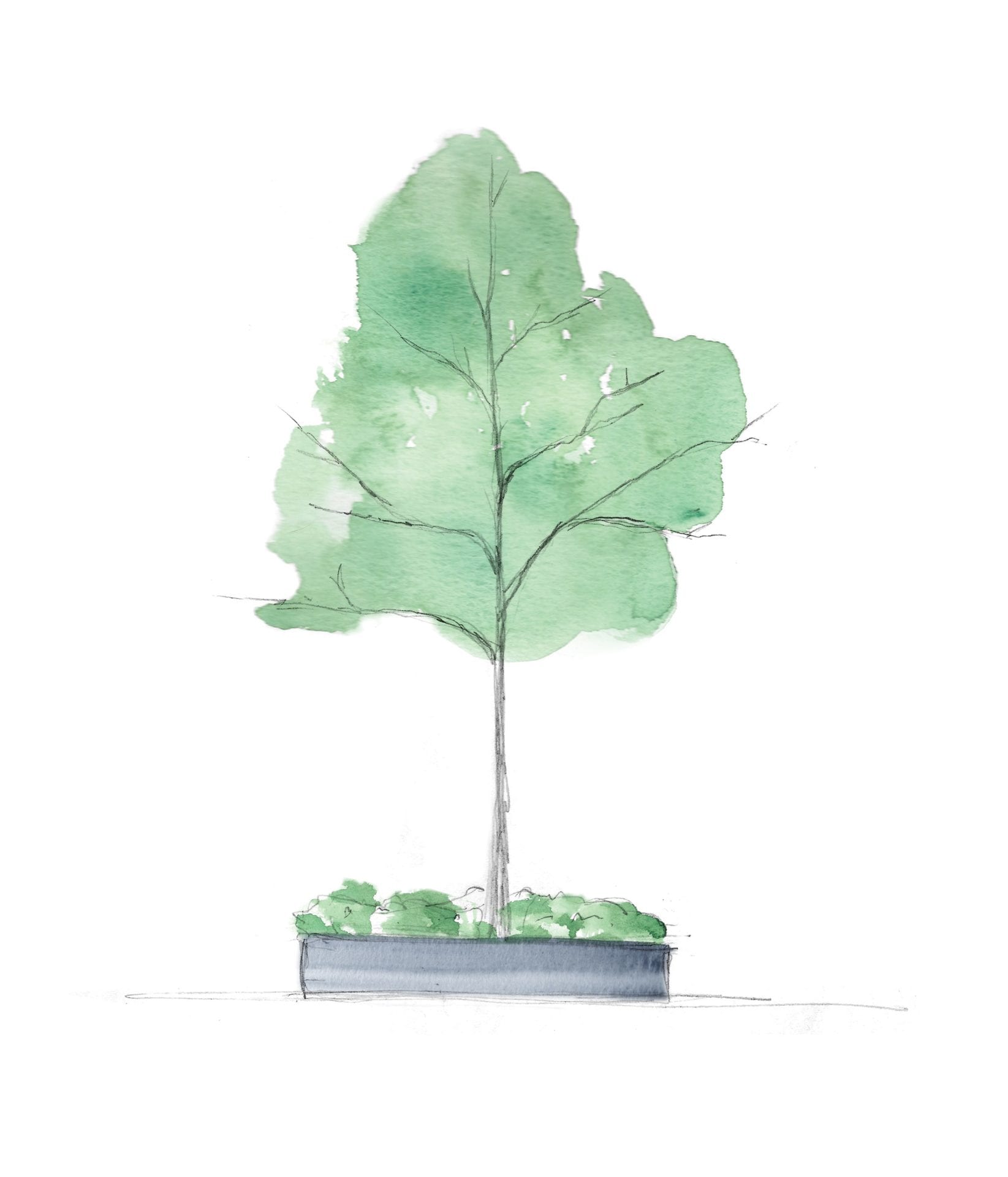
Native ground covers planted at the base of a shade tree helps retain soil moisture and minimize erosion.
Growing Your Trees
After planting, be careful not to cover the flared base of the tree trunk with soil or mulch as this will harm the tree. To help retain soil moisture and minimize erosion, plant a native ground cover around the tree. Choose something vigorous and shade- and drought-tolerant like wild geranium, Canadian anemone, or wild strawberry. Layer about 2 inches of undyed hardwood mulch around your new plantings. When autumn comes, let fallen leaves remain to provide natural nutrients as they decompose.
Water your saplings deeply and infrequently during dry spells in the first two years after planting, particularly in summer. If you plant a street tree, prune it periodically (in winter, when tree is dormant) to maintain a branching height above 6 feet so that people can walk easily underneath.
When strolling your neighborhood or yard, look for spots that would benefit from a resident shade tree. If you plant and care for one, its presence will bring you pleasure and provide benefits for generations to come.
About the Author
Julia Frederick is a Maine-licensed landscape architect who recently moved to Portland from Massachusetts. Since her move to Maine full-time, she has joyfully folded the mission of Wild Seed Project (WSP) into her professional as well as personal life. In addition to freelance work designing native plant gardens, she works part-time at Mitchell & Associates where she is committed to creating ecologically functional landscapes that celebrate regional native plants, support wildlife, and strengthen the relationship between those that use the landscape and local ecology. In her free time, Julia propagates WSP seeds and works on her own ecological restoration experiments: an urban fill slope behind her house and a meadow at her mountain cabin.
***
Each author appearing herein retains original copyright. Right to reproduce or disseminate all material herein, including to Columbia University Library’s CAUSEWAY Project, is otherwise reserved by ELA. Please contact ELA for permission to reprint.
Mention of products is not intended to constitute an endorsement. Opinions expressed in this newsletter article do not necessarily represent those of ELA’s directors, staff, or members.

